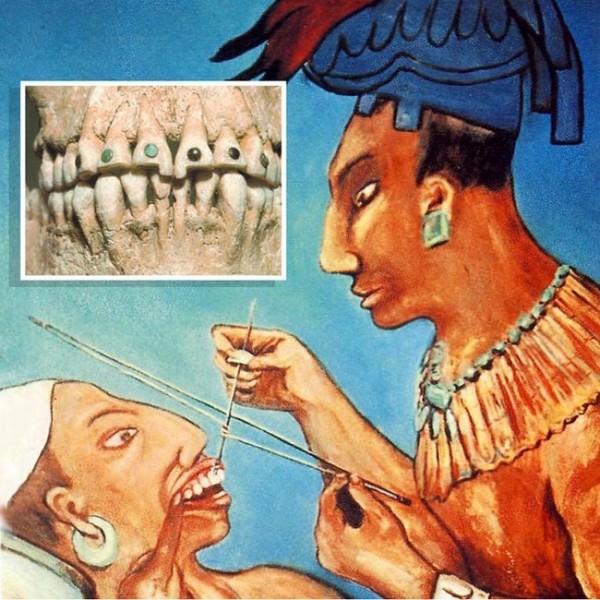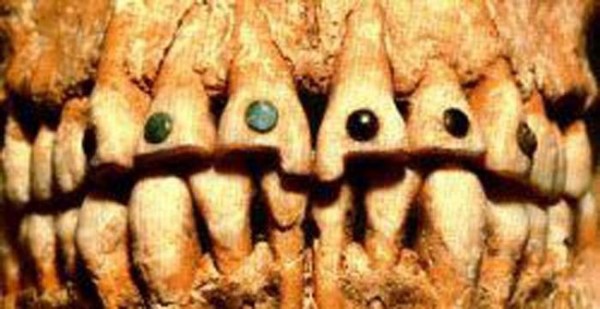
The Mayans were skilled in placing stone inlays into prepared cavities on the front teeth, using a variety of minerals such as jadeite, serpentine, pyrite, cinnabar, turquoise, hematite, and iron pyrites. These inlays, visible today in artifacts displayed at the Mexico City Museum, showcase the Mayans’ intricate dental craftsmanship.

To create the cavities, the Mayans employed a simple yet effective technique: they used a copper tube spun by hand, with quartz powder in water as an abrasive agent. This process allowed them to drill small, round holes in the tooth enamel, into which the carved stone inlays were carefully placed and ground to fit perfectly.

Interestingly, this modification was only performed on adult teeth; younger children were not found with these alterations. This suggests that dental inlays were likely a mark of maturity or adulthood, signifying one’s status or role within society. The practice highlights the Mayans’ understanding of body modification as both a personal and social statement, deeply rooted in their cultural and spiritual beliefs.






